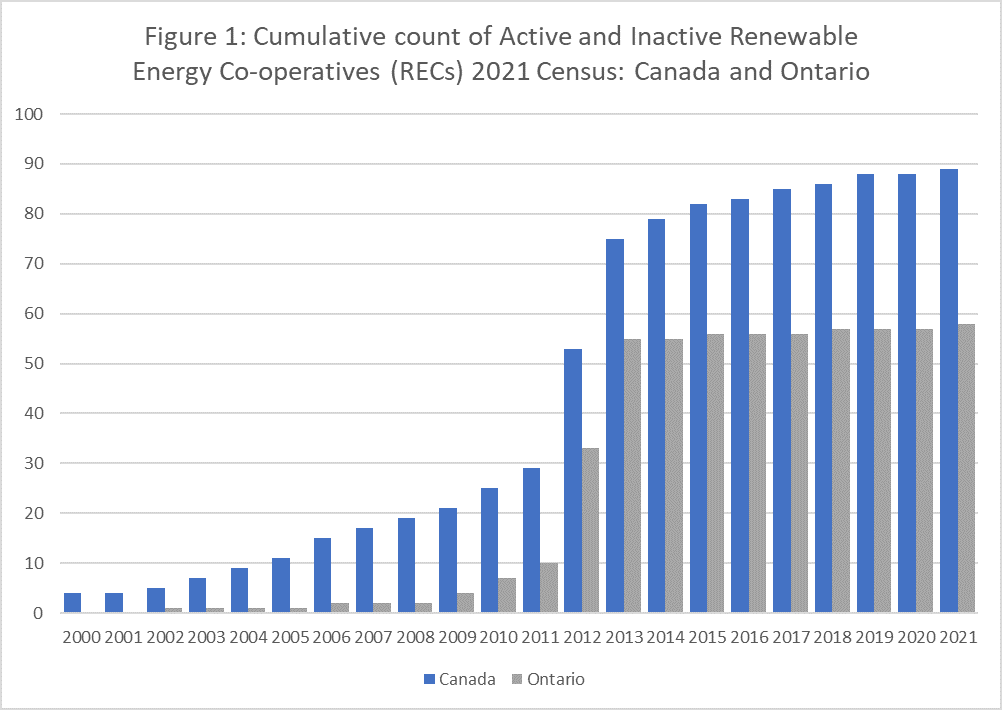Introduction
Download the JSGS Policy Paper
Download the Discussion Questions
As the spectre of a climate crisis casts an increasingly worrisome global shadow, Canada has started to take action, setting a goal to reach net-zero greenhouse gas emissions by 2050. To reach this target, the government is charting its course through the adoption of clean energy (Government of Canada 2023c). The announcements and commitments from the federal government reflect a promising trajectory – a series of actions that signify the most significant investments in Canada's history to support a low-carbon transition.
The Canadian Net-Zero Emissions Accountability Act, passed on June 29, 2021sets a concrete target and milestones to achieve net-zero emissions (Government of Canada 2023b). It outlines a plan to reduce emissions by 40-45% from 2005 levels by 2030 (Government of Canada 2023b). More recently, the Canadian Sustainable Jobs Act tabled in June 2023 seeks to operationalize the concept of a “Just Transition”1 in Canada, aimed at ensuring low carbon infrastructure is also equitable and inclusive (Government of Canada 2023a). However, amidst the national ambition lies a nuanced challenge – striking a balance between setting out broad, national-level objectives and putting them to work and making them real locally, where they matter to people’s everyday lives. After all, Canada has been a signatory to climate change targets for decades but has consistently failed to meet its goals. The question therefore is not so much about what we need to do – reduce carbon – but how we need to get there and who needs to be part of the solution?
What’s more, Canada must achieve these objectives while maintaining an efficient, stable, secure, and competitive grid infrastructure while simultaneously doubling grid capacity by 2050. These duel policy objectives –achieving net-zero emissions while increasing overall electricity capacity—will be the most ambitious infrastructure undertaking this century (Annesley et al. 2023). To move the dial on this energy transition challenge, no policy option can be left unexplored.
Part of the answer may well lie in the mobilization of citizens and their communities in the form of Renewable Energy Cooperatives (RECs). These organizations, defined by their democratic structure, community focus, and collective ownership, offer Canadians an opportunity to actively participate in the energy transition while reaping tangible economic benefits (MacArthur 2016). RECs empower local communities to take some control over their energy future, enabling Canada's low-carbon transition to resonate at the grassroots level, create opportunities for local investment, and perhaps most importantly, introduce a degree of resilience into an energy grid that itself is becoming increasingly vulnerable to climate events (Boucher 2021; Das et al. 2020).
Despite having the potential to make a contribution to Canada's energy transition and the resilience of the country’s energy systems, RECs still occupy a small portion of the country's energy market. Given Canada's net-zero transition goals, RECs, if enabled to scale up, could play a pivotal role in ensuring that the nation's energy transition is not just effective—but also fair and inclusive.
A Census of Renewable Energy Cooperatives
To understand the landscape of RECs in Canada, members of our research team conducted a nationwide census (Pigeon, Boucher, and Leonhardt 2022; Boucher and Pigeon 2023) that examined hundreds of online sources including REC websites, social media pages, and local news sources to build a comprehensive database about each REC2. Building on earlier work by members of the team (MacArthur 2016), the Census project also conducted interviews with people who have direct involvement with RECs, such as board members and employees. This two-pronged approach yielded factual data and first-hand insights into the challenges and successes experienced by these co-operatives.
According to the census, Canada is home to 49 active RECs, 44 percent fewer than identified in the last major census conducted in 2016 (Lipp 2016). Most of these RECs are located in Ontario, making it the primary hub for such initiatives. Despite hosting 67 percent of the country's active RECs, Ontario saw a decrease in the number of RECs from 2016 to 2021. The Census data revealed significant growth of RECs in Canada between 2011 and 2013, largely attributed to Ontario and its feed-in-tariff policy, which provided renewable energy producers with guaranteed prices for their energy production, largely from wind and solar. However, outside of Ontario, the formation of new RECs has been modest, mostly occurring in the 2000s (see Table 1, 2) with the increasing popularity of renewable energy, the reduction in associated technology costs, and rising costs for conventional non-renewable energy sources like oil and gas.
In Quebec, for example, the province’s forestry co-operatives – formed in the 1960s and 1970s – began exploring the potential for biomass energy following a rapid escalation of energy prices in the 1970s. Going back even further, community-controlled Canadian co-operatives have also been active in other aspects of energy service provision, from rural electricity and gas distribution in Alberta to refining and retailing of oil products in Saskatchewan and across Western Canada (MacArthur 2016). Figure 1 tells the story, showing how – based on our census findings – Ontario accounts for the bulk of Canada’s REC sector and that most of that growth took place in and around the time the province introduced its FIT program. Note that this graph includes active and inactive RECs identified by our 2021 census.

What we heard from the REC sector?
RECs in Canada are navigating a landscape dotted with both obstacles and opportunities. Internal challenges present a steep uphill climb, with economic burdens such as high hiring and operational costs, low return rates, and significant upfront costs required for project initiation. Beyond the financial aspects, RECs struggle operationally, particularly in recruiting team members equipped with essential accounting and legal expertise. However, these barriers haven't stopped some organizations from making impressive strides—one REC reported raising nearly $70 million since its inception.
RECs confront additional external hurdles. Cost-prohibitive regulations and an apparent bias towards large-scale, centralized energy generation by provincial and federal governments have been recognized as major roadblocks. The public's lack of awareness and understanding of the co-operative model further complicates the scenario. Yet, amidst these challenges external support such as government funding has proven instrumental in the development of many RECs.
Notably, several enablers have been identified that help RECs thrive despite the challenging landscape. Policies like small-scale generation programs, feed-in-tarriff (FIT), and net metering, along with support from credit unions, have played an important role in fueling the growth of the sector.3 Internally, the ability to recruit volunteers with strong professional or educational backgrounds, and the presence of dedicated staff, have proven crucial in overcoming challenges and driving the success of RECs.
In essence, despite a rocky path, the perseverance of RECs, coupled with the strategic use of available resources and supportive policies, can help navigate the evolving energy market. Despite their constraints RECs can offer numerous societal benefits, such as local procurement, investment opportunities, access to affordable, clean energy, and the potential for a more resilient energy system. These local community enterprises are also often connected to other socially driven local food, housing and educational organizations, providing opportunities for synergistic partnerships. These cross-sectoral collaborations are necessary because energy transitions are multifaceted.
What can you learn from other jurisdictions?
While Canada’s REC sector is small, the experience in other jurisdictions suggests they can play a much bigger role in driving sustainable change in the energy sector. In particular, RECs have shown that they can ‘scale up’ and ‘aggregate’ their contributions to the climate crisis by using second-tier organizations, such as leagues or federations. These entities, owned and controlled by co-operatives, have facilitated substantial growth and enabled co-operatives to gain a foothold in numerous sectors like finance, insurance, agriculture, fisheries, and grocery retailing. They also provide important institutional anchors for cross-industry collaborations amongst co-ops.
An exemplary case in the renewable energy domain is the Brussels-based federation, REScoop. Founded in 2014, REScoop has effectively advocated for more than 3000 RECs across Europe, supporting REC formation, education, and providing tools for essential functions like measuring contributions to climate change (Lowitzsch and Hanke 2019). Countries and regions seeking to enhance their renewable energy capacities through RECs can draw significant insights from REScoop’s approach (Huybrechts and Mertens 2014). Even in the face of jurisdictional challenges — a common issue for many nation-states and regions, much like the European and Canadian provinces' experiences with electricity provisioning — collective action through intermediary organizations has proven to be a powerful tool (Busch et al. 2021; Guerreiro and Botetzagias 2018; Herbes et al. 2017; Nolden, Barnes, and Nicholls 2020).
The concept of scaling up RECs can also go beyond traditional approaches like forming federations or leagues. It can also involve informal networks of actors and innovation hubs. Researchers have highlighted the benefits of multi-stakeholder networks within co-operatives, which provide the flexibility needed to adapt to complex systems (Novkovic 2014). For example, in Colorado, citizens mobilized to develop a network of distinct and independent co-operatives in the solar industry for solar generation (Namasté Solar), bulk purchasing (Amicus Solar), equipment and maintenance (Amicus O&M), a credit union (Clean Energy Credit Union), and an investment fund (Kachuwa Impact Fund) (Martins Rodrigues and Schneider 2021). These interconnected organizations mutually support each other, creating an ecosystem that facilitates the growth of RECs.
Studies have shown that the presence of intermediary organizations – like leagues/federations or multi-stakeholder networks – play a crucial role in supporting the development of RECs (Gustafssona and Mignon 2020) through collectivizing power for policy advocacy, building public support through popular education, and providing a platform for knowledge and expertise exchange among RECs (Busch et al. 2021; Guerreiro and Botetzagias 2018). In Germany, the existence of other co-operatives was associated with stronger growth of RECs compared with districts with a less well-developed co-operative ecosystem (Hanisch and Fairbairn 2017).
Census findings and other research reveal, however, that Canadian RECs have had limited success developing these kinds of networks, either in the form of leagues or federations of other RECs or simply a broadly supportive co-operative ecosystem. Bridging these gaps is essential because effective governance and strong networks are critical to sustainable growth and operational alignment across sectors. By fostering collaboration and knowledge exchange, these networks can amplify the role of RECs in advancing their shared objectives, such as mobilizing the public, facilitating dialogue between government and citizens, providing context-specific expertise, driving accepted change, advancing policy solutions that can support a decentralized energy system, and integrating sustainability.
The Policymaker's Dilemma
This brings to the fore a critical aspect of the policy-making process. Policymakers, especially in the context of the energy transition, allocate their limited time, resources, and political capital to achieve maximum impact. They must wisely utilize their limited resources to optimize for government objectives. On the one hand, the potential effectiveness of RECs in garnering social acceptance and contributing to climate change mitigation is apparent; on the other, the allure of quick, large-scale impact through partnerships with big private energy entities, with their substantial investments in wind farms and solar installations, cannot be ignored. Therefore, negotiating the balance between grassroots, co-operative movements like RECs and large-scale private investments forms a complex but integral part of the policymaker's dilemma.
Even policymakers who recognize the merit of supporting RECs often opt for the latter approach, prioritizing short-term large-scale climate action at the expense of long-term social acceptance and community empowerment. This dilemma underscores the crucial need for RECs to scale up. By achieving greater scale and influence, RECs can effectively address this policymaker dilemma, demonstrating their potential to deliver both local engagement and substantial climate impact.
Measuring Success
In an important way, climate change policy boils down to a problem of measurement. Decision-makers aim for a renewable energy grid, strive for zero emissions, distribute carbon credits, provide tax breaks, and survey the public's views on these strategies. They need a reliable method to track progress and ensure accountability.
There is abundant evidence that RECs can contribute to these goals while generating important societal benefits like local empowerment, educational opportunities, access to affordable clean energy, bolstering local businesses, and introducing a degree of resilience into the energy system (Tarhan 2015; Wagemans, Scholl, and Vasseur 2019; Mirzania et al. 2019). The catch, however, is a substantial gap in concrete evidence demonstrating the impact of the REC sector in Canada. Census findings show that the sector struggles to make available basic financial data to its members, with only the biggest RECs able to provide any kind of evidence on carbon or social impact.
In essence, the pathway to influencing policy and attracting governmental support is inextricably linked to the RECs' ability to measure and demonstrate their impact. This 'catch-22' scenario, in turn, underlines the importance of RECs scaling up, thereby equipping them to measure better and showcase their value.
Planting the Seeds to Scale
This need for scale was a key catalyst for a national event we held in Ottawa in May. Aptly titled 'Scaling Up the Impact of Renewable Energy Cooperatives in Canada,' this event gathered REC leaders from across the country to strategize on scaling up. The gathering resulted in the formation of an interim steering committee tasked with developing a second-tier entity for the REC sector.
A Path Forward
Considering this progress, we propose policymakers to consider the following:
- Encourage and support the work of the interim steering committee in their efforts to establish a second-tier cooperative association for RECs. This approach, proven in other cooperative sectors and in other jurisdictions, can significantly accelerate RECs' contributions to climate change.
- Study legal and regulatory frameworks that could promote the growth and scalability of RECs. In particular, we think policymakers should strongly consider the development of virtual net metering policies that would enable RECs to operate effectively as small utilities and add resilience to the energy system. Such policies should facilitate collaboration across government, civil society, and the private sector.
- Invest in further research to identify locally relevant strategies for scaling up RECs. The insights gained could inform energy transitions not only in Canada, but globally as well.
These recommendations set out a path for RECs to emerge from the periphery and assume a pivotal role in Canada's energy transition. By confronting their challenges head-on and capitalizing on their potential, RECs can make substantial strides toward a more sustainable, energy-rich future for Canada.
The strength of the REC sector, characterized by local control and responsiveness, paradoxically also manifests as its weakness. The sector currently grapples with articulating its collective voice powerfully and consistently to policymakers beyond the local context, particularly at the federal and provincial levels. However, our work reveals that RECs have weathered these and other adversities and are steered by individuals exhibiting remarkable persistence, resourcefulness, resilience, and focus - qualities imperative for tackling climate change. By cultivating collective action in the form of a league helmed by such actors, we believe there is a reason for optimism. There exists a real possibility for RECs to realize their potential and make a substantial impact on the energy transition.
Funding
We would like to acknowledge that the project funding was provided by the Cooperators, a private cooperatively administered firm with locations across Canada, and the Social Sciences and Humanities Research Council of Canada.
Marc-Andre Pigeon

Marc-André Pigeon is the director of the Canadian Centre for the Study of Co-operatives and an assistant professor in the Johnson Shoyama Graduate School of Public Policy (JSGS). His research interests center around the study of co-operatives, money and banking, and governance.
Martin Boucher

Martin Boucher is a Faculty Lecturer at the Johnson Shoyama Graduate School of Public Policy, University of Saskatchewan, where he leads the online Master of Public Administration. His research focuses on public sector entrepreneurship and energy transition acceleration.
Julie MacArthur

Julie MacArthur is the Canada Research Chair in Reimagining Capitalism and Associate Professor at Royal Roads University. She researches the contribution of economic and participatory democracy to just energy transitions.
Derya Tarhan

Derya Tarhan is an Assistant Professor, Teaching Stream at the University of Toronto and a Postdoctoral Research Fellow at Royal Roads University. His research and teaching lies at the intersection of energy transitions, social justice, and community economies.
Karen Miner

Karen Miner is the Managing Director of the International Centre for Co-operative Management (Saint Mary’s University) where she develops global relationships and networks, combined with sharing and exchanging knowledge on how to build people-centred economies and societies. She is an expert in the management and governance of values-based businesses, with an emphasis on co-operatives, credit unions, and mutuals.
Endnotes
[1] “Just Transition” refers to a shift towards sustainable and equitable energy practices, but its interpretation varies across the energy, environment, and climate research fields due to differing views of 'justice'. The need for a unified understanding of 'just transition', incorporating 'energy', 'environmental', and 'climate justice' is critical for clearer public communication and effective interdisciplinary research.
[2]For a geographical map of RECs across the country see: https://www.google.com/maps/d/u/0/viewer?mid=14FhWpX5IHyKdgsysSsnUV4McejyaKowf&ll=49.52426689137828%2C-92.85315432116411&z=5
[3] Small-scale generation programs provide long-term (ex., 20 years) above market rates for local renewable energy production.; FITs are programs that promise renewable energy suppliers (like RECs) a guaranteed rate for any energy they produce and sell into the grid. Net metering is a policy tool that enables producers – up to and including households – to ‘sell into the grid’ any energy they produce from solar, wind, or ground-source energy over and above what they use for their own purposes (behind the grid).
References
Annesley, Janey, David Campbell, Arash Golshan, and Edward Greenspon. 2023. “Project of the Century: A Blueprint for Growing Canada’s Clean Electricity Supply —and Fast.” Public Policy Forum . https://ppforum.ca/wp-content/uploads/2023/07/Canada%E2%80%99sCleanElectricitySupply-PPF-July2023-EN-1.pdf.
Boucher, Martin. 2021. “Accelerating Decentralized Energy Transitions: A Socio-Technical Perspective.” Ph.D. , University of Saskcatchewan. https://harvest.usask.ca/handle/10388/13619.
Boucher, Martin, and Marc-Andre Pigeon. 2023. “Scaling Up Renewable Energy Co-Operatives for a Net-Zero Canada: Challenges and Opportunities for Accelerating the Energy Transition (Manuscript Submitted for Publication).” University of Saskatchewan.
Busch, Henner, Salvatore Ruggiero, Aljosa Isakovic, and Teis Hansen. 2021. “Policy Challenges to Community Energy in the EU: A Systematic Review of the Scientific Literature.” Renewable and Sustainable Energy Reviews 151 (November): 111535.
Das, Laya, Sai Munikoti, Balasubramaniam Natarajan, and Babji Srinivasan. 2020. “Measuring Smart Grid Resilience: Methods, Challenges and Opportunities.” Renewable and Sustainable Energy Reviews 130 (September): 109918.
Government of Canada. 2023a. “Bill C-50: An Act Respecting Accountability, Transparency and Engagement to Support the Creation of Sustainable Jobs for Workers and Economic Growth in a Net-Zero Economy.” https://www.parl.ca/DocumentViewer/en/44-1/bill/C-50/first-reading.
———. 2023b. “Net Zero Emissions by 2050.” 2023. https://www.canada.ca/en/services/environment/weather/climatechange/climate-plan/net-zero-emissions-2050.html.
———. 2023c. “Budget 2023 —A Made-in-Canada Plan: Strong Middle Class, Affordable Economy, Healthy Future.” https://www.budget.canada.ca/2023/report-rapport/toc-tdm-en.html.
Guerreiro, Susana, and Iosif Botetzagias. 2018. “Empowering Communities – the Role of Intermediary Organisations in Community Renewable Energy Projects in Indonesia.” Local Environment 23 (2): 158–77.
Gustafsson, Sara, and Ingrid Mignon. 2020. “Municipalities as Intermediaries for the Design and Local Implementation of Climate Visions.” European Planning Studies 28 (6): 1161–82.
Hanisch, M., and B. Fairbairn. 2017. “Social Innovation, Conflict, and Institutionalization of German Energy Co-Operatives.” In 6th EMES International Research Conference Selected Papers, 1–17.
Herbes, Carsten, Vasco Brummer, Judith Rognli, Susanne Blazejewski, and Naomi Gericke. 2017. “Responding to Policy Change: New Business Models for Renewable Energy Cooperatives--Barriers Perceived by Cooperatives’ Members.” Energy Policy 109: 82–95.
Huybrechts, Benjamin, and Sybille Mertens. 2014. “The Relevance of the Cooperative Model in the Field of Renewable Energy.” Annals of Public and Cooperative Economics 85 (2): 193–212.
Lipp, Judith. 2016. Accelerating Renewable Energy Co-Operatives in Canada: A Review of Experiences and Lessons. Toronto Renewable Energy Co-operative (TREC).
Lowitzsch, Jens, and Florian Hanke. 2019. “Renewable Energy Cooperatives.” In Energy Transition: Financing Consumer Co-Ownership in Renewables, edited by Jens Lowitzsch, 139–62. Cham: Springer International Publishing.
MacArthur, Julie L. 2016. Empowering Electricity: Co-Operatives, Sustainability, and Power Sector Reform in Canada. UBC Press.
Martins Rodrigues, Julia, and Nathan Schneider. 2021. “Scaling Co-Operatives Through a Multi-Stakeholder Network: A Case Study in the Colorado Solar Energy Industry.” Journal of Entrepreneurial and Organizational Diversity 10 (2). https://papers.ssrn.com/abstract=4038292.
Mirzania, Pegah, Andy Ford, Deborah Andrews, George Ofori, and Graeme Maidment. 2019. “The Impact of Policy Changes: The Opportunities of Community Renewable Energy Projects in the UK and the Barriers They Face.” Energy Policy 129 (June): 1282–96.
Nolden, C., J. Barnes, and J. Nicholls. 2020. “Community Energy Business Model Evolution: A Review of Solar Photovoltaic Developments in England.” Renewable and Sustainable Energy Reviews 122 (April): 109722.
Novkovic, Sonja. 2014. “Co-Operative Networks, Adaptability and Organizational Innovations.” In Co-Operative Innovations in China and the West, edited by Caroline Gijselinckx, Li Zhao, and Sonja Novkovic, 47–63. London: Palgrave Macmillan UK.
Tarhan, M. 2015. “Renewable Energy Cooperatives: A Review of Demonstrated Impacts and Limitations.” Journal of Entrepreneurial and Organizational Diversity. https://papers.ssrn.com/sol3/papers.cfm?abstract_id=2605796.
Wagemans, D., C. Scholl, and V. Vasseur. 2019. “Facilitating the Energy Transition—The Governance Role of Local Renewable Energy Cooperatives.” Energies. https://www.mdpi.com/564994.

